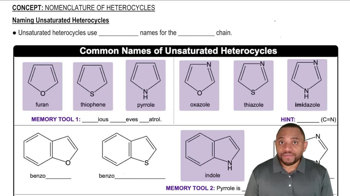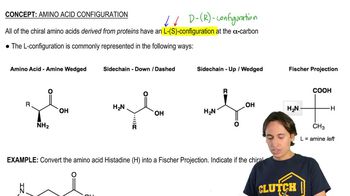Which of the following names are correct? Correct those that are not correct.
c. 4-chloro-2-pentyne
d. 2,3-dimethyl-5-octyne

 Verified step by step guidance
Verified step by step guidance Verified video answer for a similar problem:
Verified video answer for a similar problem:



 1:55m
1:55mMaster How to name alkenes and alkynes with a bite sized video explanation from Johnny
Start learning